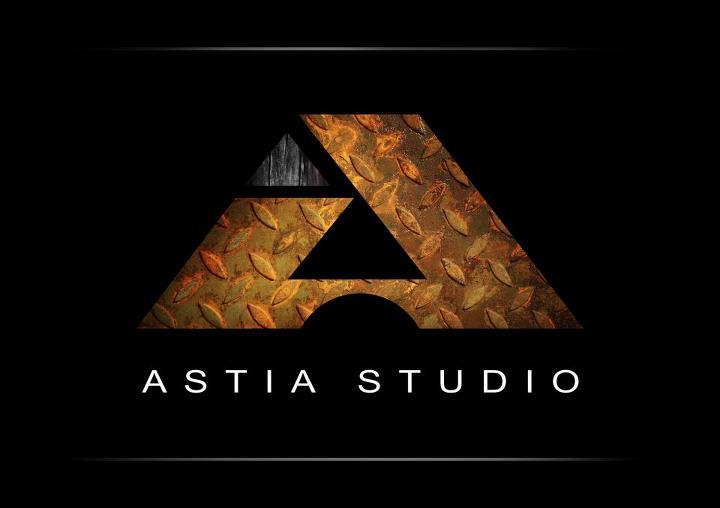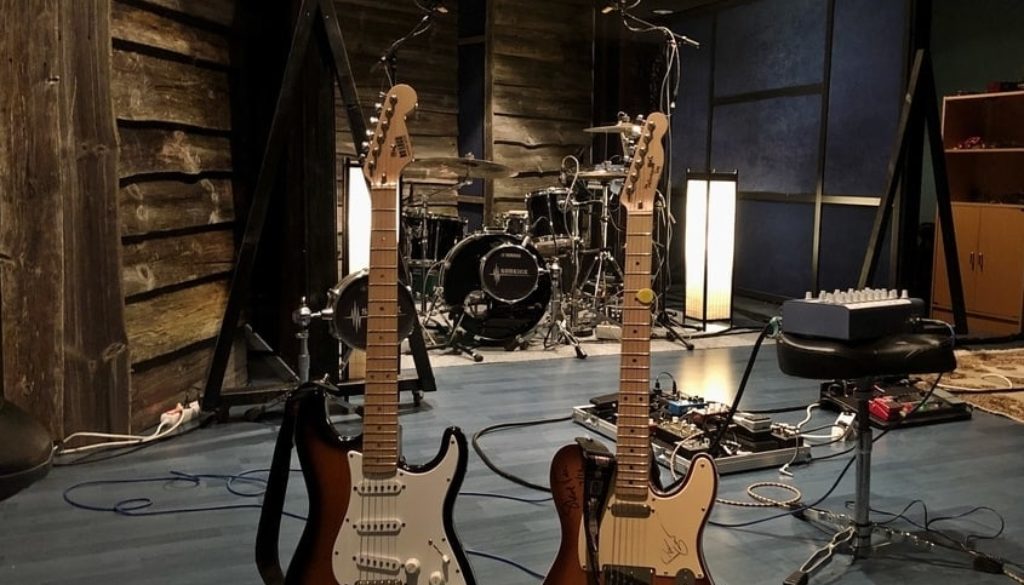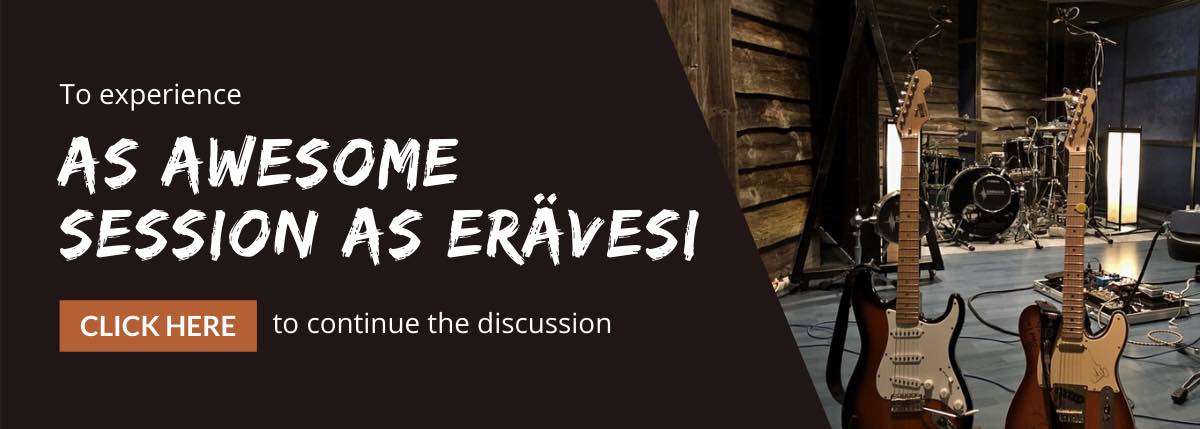“From Now On This Is The Only Way Erävesi Will Make Recordings” – Case Study Erävesi
The bands that I’ve lately done sessions with have one thing in common. Two of them planned to make the first tape session the last of their career. Yet, both got huge inspiration from the session and decided to continue making music. “I’m ready to sell my digital gear… From now on this is the only way Erävesi will make recordings” – Case study Erävesi.
From this writing you will learn why you feel drained after a studio day. I’ll go through the interesting aspects of music producing and the band describes how you can spot a great take during recording. This post has lots of important info whether you play an instrument, sing or work as a recording engineer.
“From Now On This Is The Only Way Erävesi Will Make Recordings”
– Case Study Erävesi
I had no idea that Erävesi band formed in 2013 had already decided to call it quits when they reserved a session last spring. The reservation was a breeze as we immediately connected and so they booked 4 days from mid-October for recording, mixing and mastering an EP.
I hoped that the difference of the analog process would bring something that you can’t have when working with DAW. Something genuine and complete along with improved sound. Recording basic tracks together without a metronome was tempting after years of moving everything to grid.
–Mikko Järvinen, guitar
They clearly had read my blog well as before the session I received WAV quality rehearsal demos, lyrics and guitar maps. The music sounded very unique and strange in a positive way and they clearly seemed to know what they wanted.
The drummer for Erävesi is Astia-studio’s frequent inhabitant Mr Toni Paananen. One of his drum sets is permanently stored at Astia so getting the gear to the studio wouldn’t take that much of an effort.
Toni is by no means scared of tape recording as we’ve done countless sessions together. The other members confessed that the new aka old recording method was infact a bit worrying.
I was pretty nervous if I could deliver long and accurate takes so that they’d work out. After the session all those fears are gone and they are replaced by the joy of how music should be made. As a band, together, capturing the moment and surprisingly fast!!! I never would have believed that this way we’d have all four songs mastered in just four days. And sounding like they do now!
–Mikko Järvinen, guitar
On the evening of the arrival we set the gear, I miked the instruments and tweaked both the recording adjustments and headphone balance. The test take by the end of the evening raised satisfaction among the members. Now everything was set and we could start recording first thing in the morning.

Drums and guitars
It’s nice to press the record button when the band has done their homework. After a warm-up and a brief check we started recording the basic tracks. Toni was on fire and nailed each of the four songs on the very first take. This is something we all should learn from.
I’ve been involved with Erävesi as a session drummer for some 1,5 years and to be honest, around the first album solid playing and groove wasn’t exactly there yet. Numerous live shows and rehearsals lead the band to find their sound and groove. At Astia we heard a whole new band capturing almost magical moments on tape.
–Toni Paananen, drums
Next it was time to track the guitars as the bass would have to wait. The guitar player Joonas ended up using the studio’s Marshall JCM800 head that has a TubeTone.ru PlatinumPlus modification. Mikko’s guitar went through a quality pedal to a Koch combo amp.
The microphone for both guitars was a Shure SM58 with the grill removed and I took the mic back from the cabinet a half a metre or so. The JCM800 was immediately ready for the recording yet, the Koch sounded a bit too bright in the control room.
I solved the problem in a bit unusual way by lifting the mic up and pointing it down in an angle. This was a result of listening to the amp in the guitar booth. Straight in front of the amp the sound was pretty bright, yet as I stood up the sound became more dark.
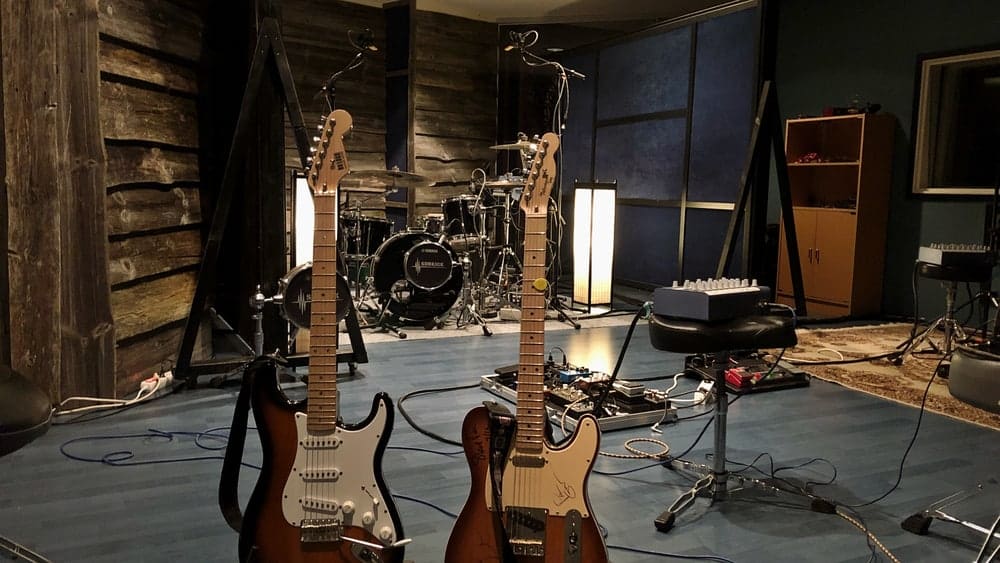
On this session I didn’t use any eq from the mixing console on guitars during recording and mixing. Once you make the source sound great you need less processing and that’s when things start to sound a lot better. The less you process the better the sound.
I’m ready to sell my digital gear and start making demos with a simple format that has a physical apparatus with play, stop, rec, ff and rev buttons. There’s time for a lot more demos and new songs as I don’t have to focus on the complexity of the recording process.
–Mikko Järvinen, guitar
Do you feel drained after a studio day?
Do you know the feeling when after a long recording day you feel exhausted and don’t want to hear a single note? I remember it very well as after locking the studio door I had to go lie down for at least a half an hour. I was so drained that I couldn’t do anything. Listening to music voluntarily was the last thing on my mind.
Once I made the transition to tape recording I’ve noticed an interesting phenomenon. During the day the ears do not get tired and I no longer need the half an hour recovery time. The band and I usually go directly from the studio to the listening room to enjoy classic vinyl records.
Recording on tape was liberating. One remarkable difference was that every evening during the last (digital) session I was totally exhausted. I had no energy to listen or concentrate the whole day as my head felt stuck. I assumed this time to be no different. The surprise was huge as my ears didn’t get tired at all, my mind was clear and even after a long studio day we continued listening to music from vinyl records. Kinda like craving for more.
–Mikko Järvinen, guitar

“I considered to put an end to this”
It’s interesting how two out of three recent bands confessed about their plans to call it quits right after the session. If neither playing nor listening gives you anything it makes perfect sense.
Mia the vocalist kinda decided in spring that we’d be done. She even wrote a song with the working title The End Song. I was sure that after the session we’d play a couple of live shows and then I should find a new hobby. Now there’s new hope for the band as the result is so awesome and the experience was both liberating and empowering.
–Mikko Järvinen, guitar
So something happened during the session that made this band too to change their mind. After a long time music brought emotion and enthusiasm, just like back when they were teenagers.
I brought “En Usko Enää” (I No Longer Believe aka The End Song) to the session and considered putting an end to the band activity. But I’ll be damned, the desire and passion for making music was reignited. From now on this is the only way Erävesi will make recordings as we do not make any compromises.
–Mia Erävesi, vocals
The stress of recording the vocals was soon gone and as the vocalist Mia put her soul into it, her bravery was rewarded. I once again captured the vocals using a Neumann U67 tube microphone from the 60’s through two channels of 1176 hardware compressors. The vocal reverb on the EP was an EMT-140 mono tube plate reverb from the 50’s and for tape delay I used a Revox B77 1/4″ tape machine.
Inspired by Toni’s actions Mia delivered the vocals for En usko enää song on the first take. When listening to the song right after the vocal recording and also during mixing those present were misty-eyed…
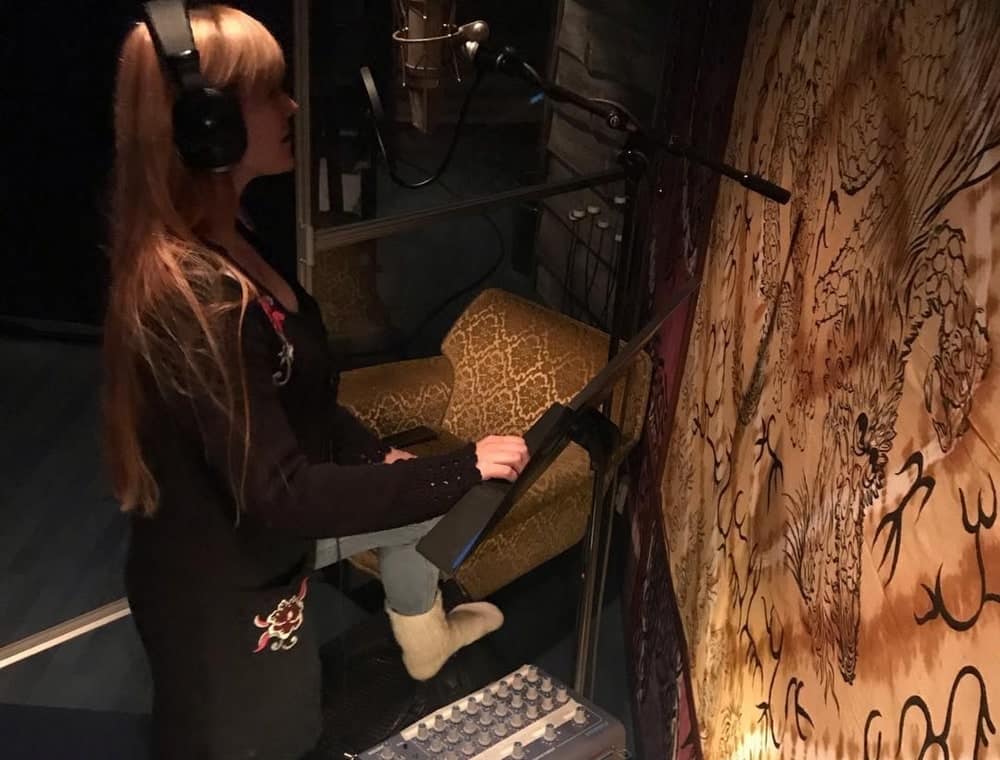
The role of the producer
During the 25 years of recording I have tested a vast amount of different approaches on both the technical and psychological departments. Even though to learn to use the analogue equipment takes years if not decades, that’s only 5 % of the big picture.
It’s very seldom that you encounter such dedication and presence. Thank you Anssi.
–Mia Erävesi, vocals
The psychological side is much more significant and it is essential for the producer to create a pleasant atmosphere. Instead of negative it’s a lot more fruitful to cheer the musicians towards the best possible take.
The importance of a producer is crucial. Criticism, seeking for mistakes, how to improve etc. – many seems to naturally fall to use those, but on this level of experience such comments are conspicuously absent. When you raise the spirit through positive feedback, you can reach and momentarily even go over the limit of your skills.
–Mikko Järvinen, guitar
Locking-in and how to spot it
Once you start paying attention to detail you will find many interesting phenomena. One of them is about solid playing and I have explained it on my earlier blog posts; “locking-in”.
It’s both cool and confusing how on every session everyone in both the control and recording rooms simultaneously wakes up to an awesome take.
What I mean by this is that every musician seems to sense when they are locked-in with the other instruments. In the control room those concentrating on mobile phone put their phones down and cheer: “That sounded awesome!”. Such comments we do not hear after an average take.
I’ll never forget the sight when recording the title track approximately for the 15th time it all of a sudden started to feel right, effortless and good. As the take ended both Anssi and Joonas rushed into the live room asking “What did you do differently?”. I couldn’t explain, but knew I had succeeded as much as my skills allowed me to. That was a genuine succeeding experience!
–Mikko Järvinen, guitar

Tape recording as a response to all that is fake
As music didn’t make me feel any emotion for some 15 years I started questioning my methods and to compare things. A simple comparison lead me to understand how much more detailed and emotional playing and singing sounds when it’s captured on tape. This is the reason why I eventually made the transition to tape recording only.
Anssi’s ears are marvellous. They hear things right. Once you experience his demonstration, you realise and remember what music truly is about!
–Mia Erävesi, vocals
“Surely the analog studio owner praises the tape recording”. I hear this pretty often and some think that my blog is nothing but an advertisement. The fact is that after meticulous comparisons I chose the tools and methods that my clients will benefit the most. Through my blog I want to share my experience so that you too can improve not only the sound but also how tight and solid you play.
And then there is this simple thing as genuineness. In music nowadays not many things are true; drums replaced with samples, editing of tracks, tuning the vocals and instead of real amps the use of modelled amp simulations. I recommend you to choose the real instead of fake. From the false basis no classic album will arise.
Case study Erävesi
Let’s hear it from the Erävesi members how they feel after the first tape recording session.
At Astia the role of the producer/recording/mixing/mastering engineer in one Anssi is so well handled that I want to make more analogue recordings with him. The atmosphere from the beginning to completing the master felt relaxed and pleasant. These four days were the best for me of 2019.
–Mikko Järvinen, guitarNatural tight and solid playing translates from the result. The rehearsing paid off. The energy is translated on a whole new level and several elements were captured on the first take. Music comes to you and the emotion touches you without any effort. I have always valued genuinity and at Astia that’s exactly what I got!
–Mia Erävesi, vocals

And finally, I cannot help but to quote Mikko’s Facebook status where he pointed out all that we did “against the rule book” during the session.
What’s on my mind still after a week is that from last Thursday to Sunday was four days when I learnt from playing more than in years. And then on the other hand we “broke” the 21st century rules like no tomorrow. We did at least the following things “wrong”.
- Instead of tuning to 440 Hz we tuned to 432 Hz
- We didn’t use a metronome
- No computers involved
- We didn’t edit anything and didn’t move clips to grid on the computer screen as there even wasn’t a screen
- No vocal tuning
- Guitars recorded without close-miking
- We used almost no pedals at all as instead we swapped the amp and guitar depending on the sound needed
- It didn’t matter if the keeper take was the 1st or 26th as we weren’t in a hurry but patiently waited for the correct moment
- We didn’t criticise or comment on the playing despite the positive feedback when the moment was right
In less than two weeks on November 11th you get to evaluate what we did. I think it sounds the best out of everything I’ve ever been involved in and most importantly it FEELS right.
–Mikko Järvinen, guitar – Facebook status October 26th 2019
Thank you very much for reading this case study. If this post was helpful, please share it on social media. This way you will help your friends to benefit from the information.
To experience as awesome session as Erävesi, contact me privately by clicking here and let’s continue from there. Thank you very much and all the very best!
Enjoy more case study posts from these Astia-studio sessions:
- “This Was Supposed To Be The Last Session For Us”
– Case Study Monotonia - “In Two Months We Learnt More Than During The Past 5-10 Years”
– Case Study Serpico - Jarmo Nikku: “The Sound Felt Natural (After Quite Some Time)”
– Case Study Seniors Clearwater Revival
Astia-studio is a full analog recording studio located in eastern Finland with 25 years of experience. Bands and artists from all over the world including USA and the furthest corner of Russia, Vladivostok have arrived to us for tape recording sessions.
These are the songs we worked on this case study session:
